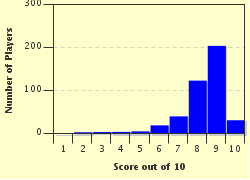Quiz Answer Key and Fun Facts
1. "The Safe Delivery from the Sea of the Roman Goddess of Love Standing in a Sea Shell".
What is the name of the main female figure in the disguised title of the above painting by Botticelli?
2. "Lovely Plants Floating on a Mixture of Hydrogen and Oxygen".
In this reworded title of a famous 1919 work by Monet, what is the environment in which the subjects are portrayed?
3. "Vigil during the Evening Hours".
This reworded title is of a famous 1642 painting by the Dutch artist Rembrandt. The painting and its correct commonly known title give an incorrect impression of the time of day in which it is set. What time of the day is it actually set?
4. Also considered one of the most famous paintings in the world, and with the reworded title of "The Yell", the real title of this 1893 work by Munch is "The...*what*"?
5. "Young Woman Wearing a Pretty Piece of Jewellery on Her Lobe".
In this reworded title of a famous work by Dutch artist Vermeer, what is the article of jewellery in question?
6. "The Final Meal of the Day".
The correct two word title for this painting was painted by the great Leonardo da Vinci. What meal does it refer to?
7. "Evening Sky Dotted with Thousands of Twinkling Objects".
This is the reworded title of Vincent Van Gogh's most famous painting. Of its correct two word title, which is the adjective?
8. "Young Lad in an Azure Coloured Outfit".
The reworded title of this painting by Gainsborough indicates the subject is wearing a specific coloured outfit. Which colour is it?
9. "Second English Stuart Monarch on a Day's Equestrian Outing".
This reworded title of a well known painting by Van Dyck (1599-1641) features a British monarch he was particularly noted for portraying. Which monarch was this?
10. "Midday Meal of a Group of People about to go out on the Water in a Suitable Object".
French impressionist Pierre-Auguste Renoir painted this work during 1880-1881. The group of people featuring in the work are about to take to the water for which activity?
Source: Author
Creedy
This quiz was reviewed by FunTrivia editor
Tizzabelle before going online.
Any errors found in FunTrivia content are routinely corrected through our feedback system.

